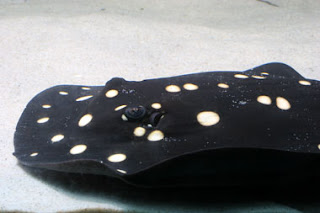 Fish. For most people, the only thing they know about these scaly creatures is whether they taste better with lemon sauce or Tarter. For pond owners, however, a little more information is needed. If you are a new pond owner who has purchased or are considering buying, Koi, goldfish or other pond fish you might have some questions. How can I introduce new fish in my pond? What should I do for my pond suitable for them? How do I maintain my new friends?
Fish. For most people, the only thing they know about these scaly creatures is whether they taste better with lemon sauce or Tarter. For pond owners, however, a little more information is needed. If you are a new pond owner who has purchased or are considering buying, Koi, goldfish or other pond fish you might have some questions. How can I introduce new fish in my pond? What should I do for my pond suitable for them? How do I maintain my new friends? Fortunately, I know more about the fish and garnish with better taste. Here are some basic tips all future owners of the pond fish need to know.
Before buying fish, you must first have your pond for life. Meaning there should be no (zip, zero, nada), ammonia, chlorine, chloramines or nitrite in the water in your pond. A test kit will be necessary to determine the level of these parameters. A de-chlorinator can be used to rid the lake of chlorine, chloramines and nitrites. The water and a change may be conducted to remove with ammonia.
A filter is crucial to maintain levels of ammonia. A biological filter is the best choice. Make sure the filter can support a pump that is able to move the total gallons of your pond at least once per hour. So if you have a pump (assuming that your pump is big enough for your pond) with a 950 GPH wish you a filter with capacity of at least 950 (although 1000 would be better.)
Once you have your water level up to par, and good filtration unit was installed, it is time to buy the new additions to your family-which is exactly what they will become. After selecting the right to fish there are some things you need to know when their introduction into your pelvis.
A bag of fish usually lasts only 45 minutes, assuming that good water to oxygen ratio was applied. Make sure that your original drive is less than 30 minutes. If it does not say a sales associate in special measures may be taken. Another oxygen can be granted.
Once you are home, leave bags of fish floating in the pond for 15 minutes before releasing it. This will regulate the temperature of the water and help prevent it from going into shock. If you think your fish is stressed or at home took them over 30 minutes, gradually filling the bag with a pool of water to accelerate the regulatory process.
Once the water bag is about the same temperature of the water in your pond, you can put your new fish in the pond. Do not throw water in the bag with your fish in the pond. Use a net to drain water from the bag outside your pond and then release your fish in its new home.
Now that your new friends are swimming quite what to do to maintain? Here are some tips:
1. Test your pool water for ammonia, nitrite, pH, oxygen, carbonate hardness, and General hardness once a week for 2-3 months for new ponds. Once the pond is fairly well established, you can test as needed.
2. Do not eat more fish. They eat algae, aquatic plants (especially lilies) and small bugs in your pool. Only feed or food Koi fish twice a week. That, combined with the regular cleaning of the filter, will help prevent spikes high ammonia.
3. Keep in mind the changing seasons. In autumn and winter around, special accommodations must be made: A defroster for climates that tend to fall below zero and wheat germ food (whatever the weather), to slow the metabolism of fish .
Then it is time to enjoy it! Fish, if specific racial or Koi mere comets, add to the beauty and placidity of your pond or water. They become very dear beloved pets and extended family members!












